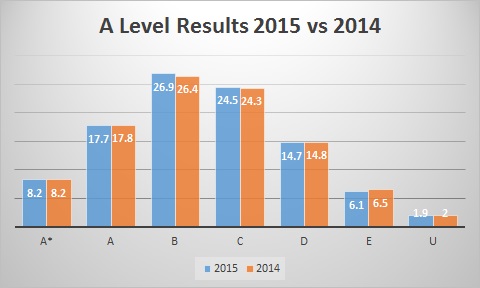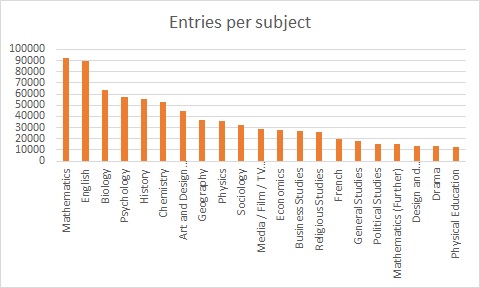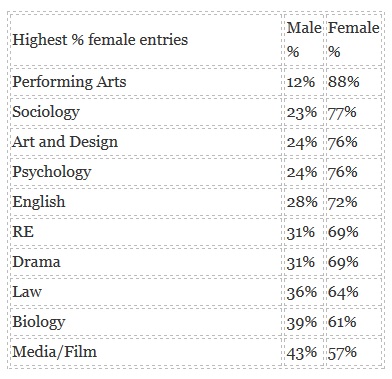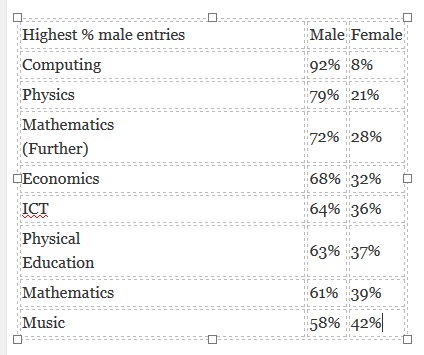A level results are out and here’s a round up of the main stats and figures:
Overall Performance
The number of A* and As has decreased but only by a tiny 0.1 percentage points to 25.9 per cent.
By contrast the overall A*-E pass rate has risen by 0.1 percentage points, to 98.1 per cent.

Which subjects are gaining/losing popularity?
Maths remained the most popular subject, with roughly 3,000 more candidates than English, its nearest competitor.
The top 10 most popular subjects remained the same as last year, except for history leap-frogging chemistry to take 5th place and pushing chemistry into 6th.
General studies continued its death slide, with a 24.25 percentage point decrease in candidates compared to 2014. Music also saw its numbers slide by 7.15 percentage points – with approximately 500 fewer students taking the subject this year.
Computing had the largest proportion increase in entry numbers, increasing by 29.1%. Spanish followed next with a 14% increase and geography with a 12.7% increase. Last year geography only had the tenth biggest increase so the current surge has been suggested as an ‘EBacc effect’.

Which subjects have the biggest gender gap in entries?
Computing continues to have the worst gender gap, with just 9% of entries coming from female candidates.
Female candidates make up more than 70% of entries in four subjects: art & design (76%), English (72%), performing arts (89%), and sociology (77%)
Male candidates make up 70% of the cohort or greater in just three subjects: computing (91%), further maths (72%) and physics (79%)


Which subjects do male and female candidates do best in?
Female candidates typically out-performed male candidates, both in terms of A*s and As.
Male candidates received higher numbers of A and A*s than female candidates in: chemistry, maths, french and spanish.
Female candidates did significantly better than their male peers in: computing, geography, media studies and physical education.
In PE only 11 per cent of male candidates received an A grade, compared to 21 per cent of female candidates.
Schools Week will be analysing the trends throughout the day. Check back for more.







Your thoughts